On an afternoon in early fall, Lucas B.B. (editor in chief of Papersky) and I journeyed to the east side of Tokyo (a shitamachi) downtown area to visit HAROSHI. The area has a bad rep because of the many old factories, abandon houses and dimly lit open spaces all of these factors combine to make the rent cheap which for many Tokyoites is a nice relief.
HAROSHI a self-taught artist and skateboarder who moved to the area 12 years ago goes on to explain:
“This area has a lot of skate spots along the river, so it’s well known in the skate community. When I moved here, I was still young, so I was skating all the time.”
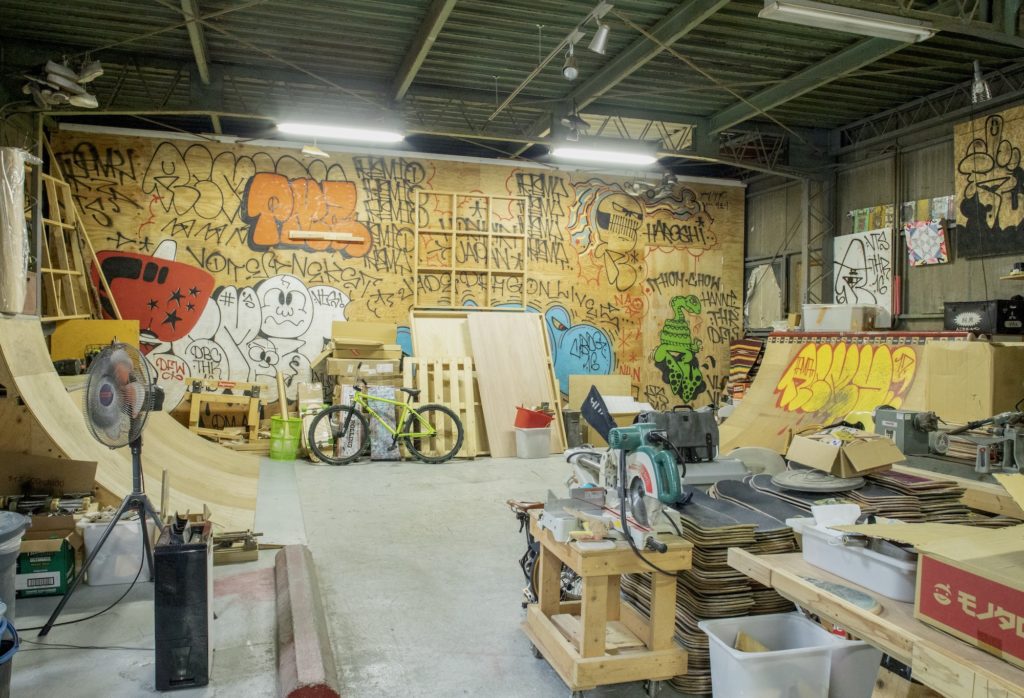
Haroshi shares the former factory atelier with other artists. But since it is not easy to make a living as an artist, only a handful can survive, so the turnover of residence is intense.
After studying jewelry design, HAROSHI worked for a jewelry manufacturer. Around this time, He met his wife, who later became his business partner. Haroshi fondly recalls;
“Jewelry manufacturing was hard labor, pay was shit and the hours were long.”
He realized it was a dead end for him unless he could create his own works. He asked his wife to join him in creating a company together. They started to make works out of wood because the patterns and textures of natural materials like wood gives each piece a unique, individual look.
“My grandfather was builder and for my summer school projects as a kid we would build structures out of wood. We would go to Tokyu Hands and buy materials. When school started, I would make a presentation of my work and my work always stood out. My grandpa and I were serious and high intensity about our projects. We were quite professional doing stuff like useing masking tape when we painted.”
HAROSHI and his wife had no money, which made good quality wood hard to come by. One day his wife suggested “since you have so many used skateboards, why don’t we use skateboards to create art.” And so it came that they started to make small accessories out of re-cycled skateboards which they would bring to shops and sell on a consignment base.
“I guess it was a big mistake to just think of what I wanted to do without thinking about all the logistic that goes into making a living from such thing.”
HAROSHI would do construction work at night, skate and make accessories to make ends meet. It was not easy but they continued on creating. One day he came up with the idea of just making a random object that would perhaps catch people’s attention. In creating his early objects he was inspired by Buddhist sculpture.
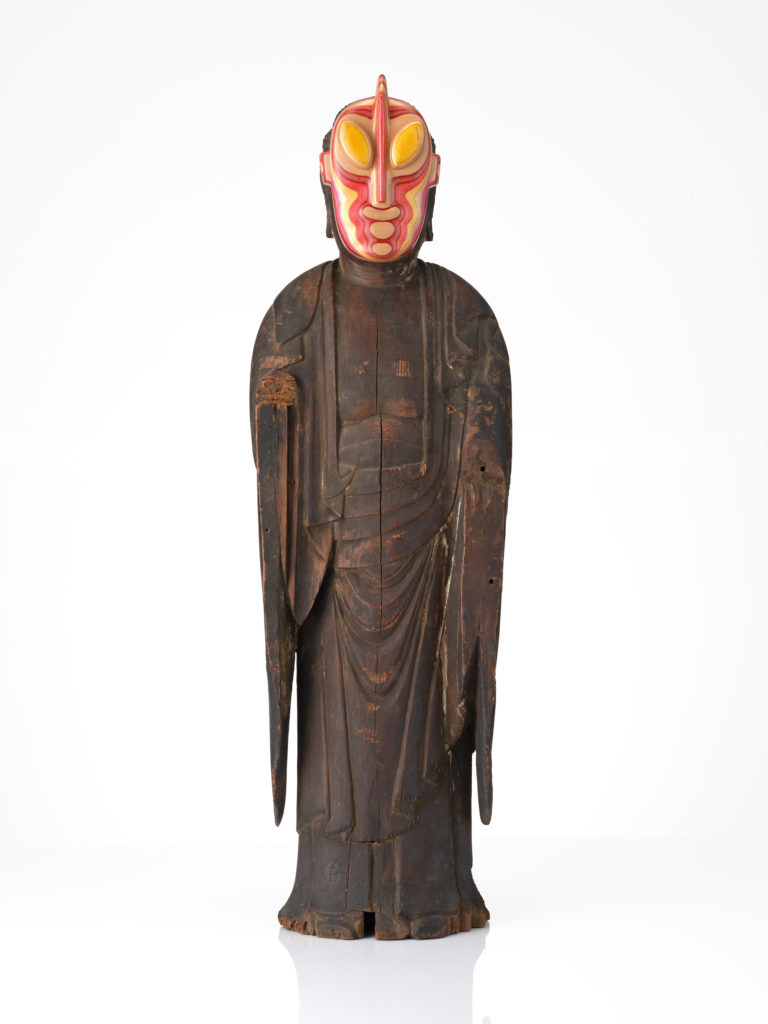

A few years after they started making ‘art’ works, a gallery invited them to have a solo exhibition. After a while, they would join a gallery in New York, and their works became popular all over the world. Around 2010, when they started to sell works, street art was beginning to attract some attention in Japan, but the art market was extremely limited.
“I never thought of myself as an artist. It’s quite recent that I got used to the term. I thought it sounded cheap. Everybody calls themselves artists these days. For me artists were special people like “Picasso and Basquiat”. So, I thought I could never call myself that. My interest in art came first from the street culture…… I liked skate graphics and listening to punk music. PUSHEAD was my first artist hero… so T shirts and graphics were my intro to art.”
“I remember when I had my first show in New York, more than 10 years ago, the gallery owner recommended that I go see a show at the Gagosian Gallery. So, I went with my friends and got in through the back entrance. I thought the show was crap. I didn’t understand art at all. I was young and stupid and was thinking I could do that…. It turns out the work was Pablo Picasso! Now I think Picasso is amazing but back then I had no idea”. (laughs)
“Anyone who skates in Japan follows American culture. It’s totally natural because skateboarding is a culture that started in the United States, we would look at magazines to imitate fashion, learn tricks by watching videos, and I even imitated the way they were pissed off after a fall.
I remember when we were skating in Yokosuka, a friend of mine broke a bone and we were all rushing to take him to the hospital. An Ambulance came and at the same time an American base military truck passed by…. they thought we were “American skate kids” and threw cigars to us. When they threw the cigars to us we were happy the same way when the Japanese lost the war, and the American soldiers were throwing chocolates. Later, I became totally ashamed. I realized it’s not about following others . . . I thought if I was going to make and create art, I had to be different. I had that drive to be taken seriously and realized to be taken seriously that you had to be accepted in the US.”
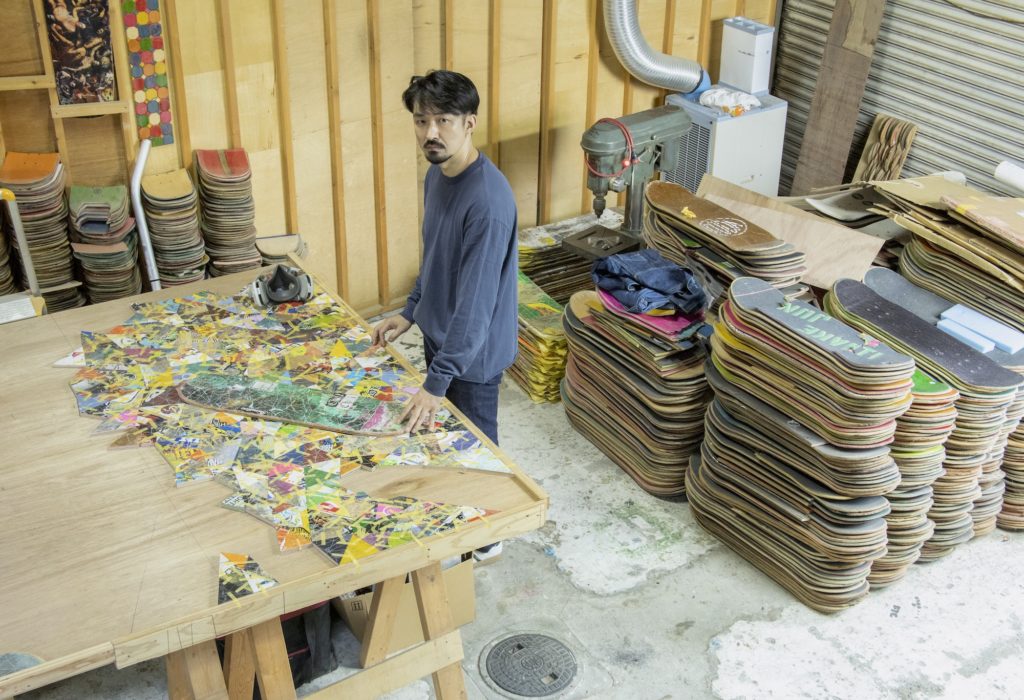
In 2011 HAROSHI was invited to have a show at the Jonathan Levine gallery in New York City. Street art was booming, and the gallery was showing works by Shepard Fairey and Invader and other artists associated with graffiti and street art. HAROSHI became a man of the moment with his art work depicting Nike’s sneaker “Dunk” but made entirely of re-cycled skateboards. The artwork was produced at the request of Mark Parker (the CEO of Nike at that time). After the “Dunk” piece HAROSHI started to get featured in magazines and media across the globe. However, maintaining his popularity for many years has not simply been a matter of continuing to create works.
“I knew then that we had to break away from street art into FINE ART. In the same way as KAWS, Keith Haring and Basquiat. All the street artists at that time were thinking the same. I started to think seriously what that jump was into the FINE ART world. First, I felt that I had to have fine art buyers and galleries around the world see my work. The art fairs, where people from all over the world gathered and I wanted to exhibit it at the highest peak of ART BASEL.”
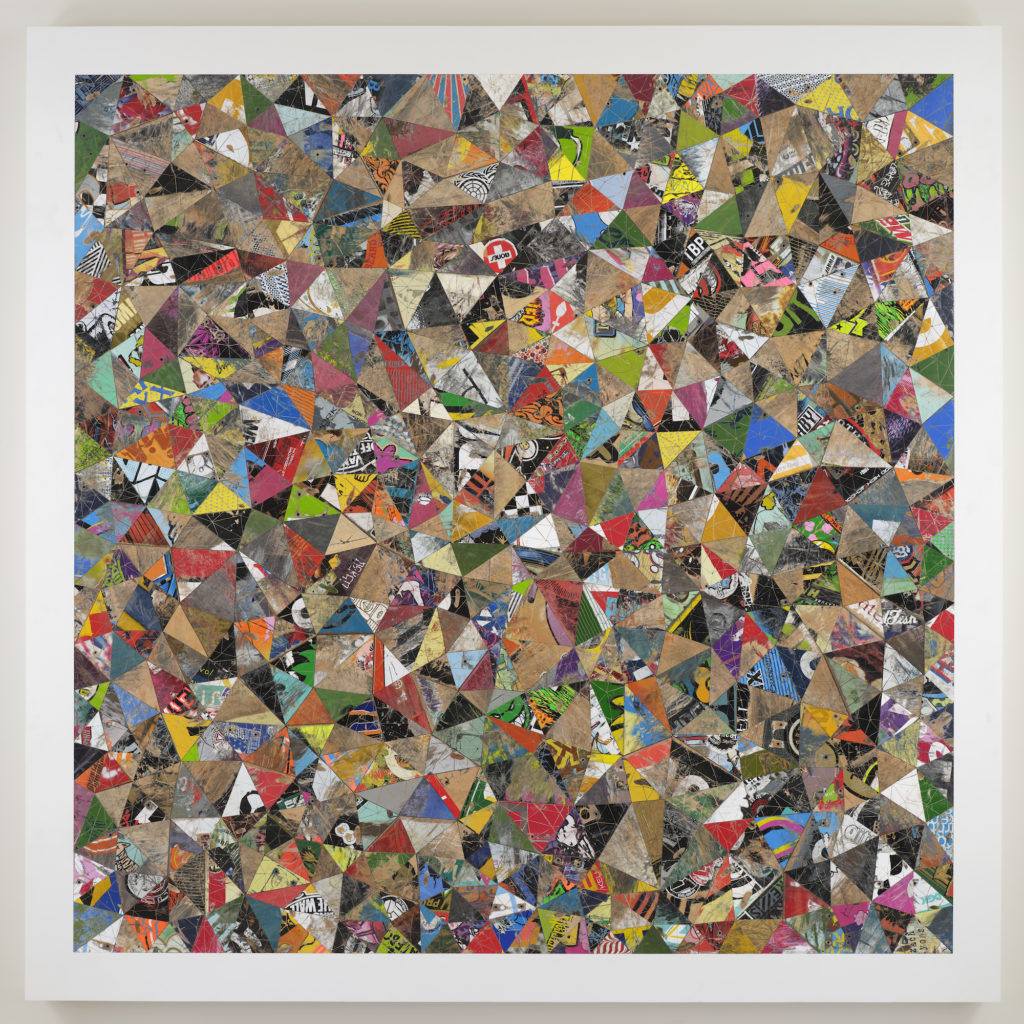
After many twists and turns, HAROSHI exhibited at Art Basel with the backing of the NANZUKA gallery in Tokyo. HAROSHI and his wife knew that whatever they would show at Basel would determine the rest of their career, the exhibition went splendidly and it helped them to acquire a new and wider customer base.
“I am still definitely a street artist at heart, but we entered the world of FINE ART to become professional ‘artists“.
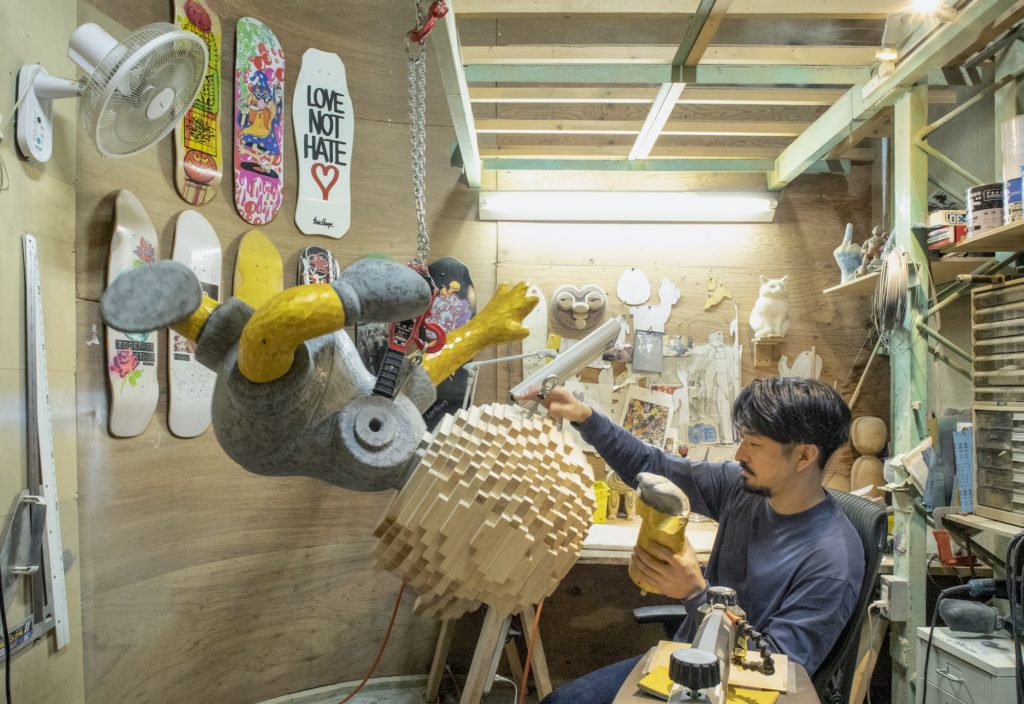
In 2022 HAROSHI will be showing their new works at renowned Jeffery Deitch’s DEITCH PROECT in New York.
“I still remember when I first started to cut and make works out of skateboards people thought they were dirty. Skateboards were simply available to us in the same way an old Brazilian man would make sandals out of used tires. It was just our lifestyle and just what we had around us.”











